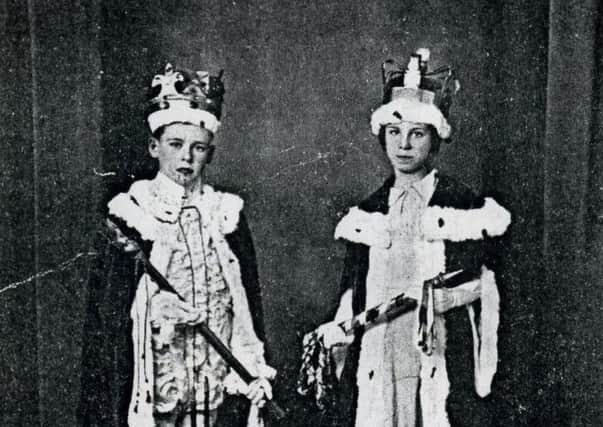Greatest show on earth comes to Dalkeith


Previously, there had only been a Queen but, in 1935, John Brown of Cupar, presented the King’s regalia to the town in memory of his father, Robert Brown, who was Provost of Dalkeith from 1911 to 1918.
On the day of the Gala, householders on the route of the procession were urged to “Spread a Little Happiness and Fly Your Flag”. Children assembled at their respective schools and marched to King’s Park, where James Mowat and Annie Calder were crowned at 2pm by Mrs Lean, the wife of the Provost. The procession, led by the Burgh Band, then marched down the High Street and New Edinburgh Road to Ironmills Park, where the rest of the festivities took place.
Advertisement
Hide AdAdvertisement
Hide AdFollowing the death of the Burgh Surveyor, Mr McDougal, the Town Council advertised the post in the paper. The applicant had to hold the Certificate of Sanitary Science and the salary was £300 per annum, rising to £350 after the first year (£19,000 to £21,000 in today’s money). Twenty-three people applied for the job and at the end of the month Andrew Forrester was appointed. Mr Forrester, who was Burgh Surveyor at Fort William, was a native of North Berwick. He would have one or two immediate problems to deal with. The Ratepayers’ Association complained that “the dust cart frequently stands in the Back Street, full and uncovered, for long periods of half an hour or more and that the dust blew about and entered open windows”. Merchants in the High Street complained about the “antiquated and unsanitary vehicle used for collecting refuse” and about the fouling of pavements by dogs.
The council gave the Lothian Electric Power Company permission to install electricity in the homes of the 37 tenants in Elmfield Park who had asked for it, on condition that no gas light fittings be removed. The Dalkeith Gas Light Company hit back, asking permission to install gas lighting in houses “where presently electricity is installed and where the occupants have expressed their desire to have the use of gas for lighting”. They claimed that 159 out of 256 houses desired this facility. It was claimed that electricity was too expensive and that during a recent power cut, tenants were left without lighting. They had no candles and the shops were shut.
Mr Main, who had recently moved into a house in Mitchell Street, had a problem getting his garden in order. A firm believer in the principles of modern efficiency and speed, he enlisted the services of a horse and plough and had the job done in an hour. “The sight of a plough in operation in a cottage garden in Dalkeith is probably unique and aroused considerable curiosity on the part of witnesses!”
On the subject of horses, Charlie, the milk horse with Edinburgh and Dumfriesshire Dairies, was accustomed to receiving a biscuit from Mrs Steele at Crystal Mount during his round. Charlie was transferred to Edinburgh and when he was sent back to Dalkeith, he deliberately walked up to Mrs Steele’s and stuck his head in the door to get his biscuit – after an interval of six years!
Advertisement
Hide AdAdvertisement
Hide AdAnd 1935 must have been the Year of the Circus in Dalkeith because, in July, the “Savage South African Circus” came to Ironmills Park. This circus featured The Great Zass, who caught a beautiful girl who had been shot from a cannon, Captain Clive and his forest bred lions, and Eagle Eyes and his troupe of wild Indians.
In August, the Corn Exchange hosted “The American Midget Circus”, starring Princess Mignonette, the world’s tiniest circus star, Buddy Cliffe, the Wee Singing Cowboy, and Colonel Cox, the famous bearded midget.
Back in January, Gandy’s Electric Circus took to the stage at the Picture Palace. The Advertiser said, “This show should make a wide appeal with its ponies, a kicking mule and the Great Revolving Table. The Three Colorados, the American stock whip and rope experts will give a display that is more familiar on the screen. Then there are comedians, dancers and jugglers. A lot of people will want to see this show.” Sadly, no report followed to explain how the Great Revolving Table worked!
But none of these circuses caused as much excitement and sensation as the circus which had been to Ironmills in July 1933. I can’t tell you the name of the circus, who the artistes were or what they did. So what caused the excitement? Did the trapeze artist fall to his death? Did the Big Top go on fire? Did the lions rip apart their tamer?
Find out next time!